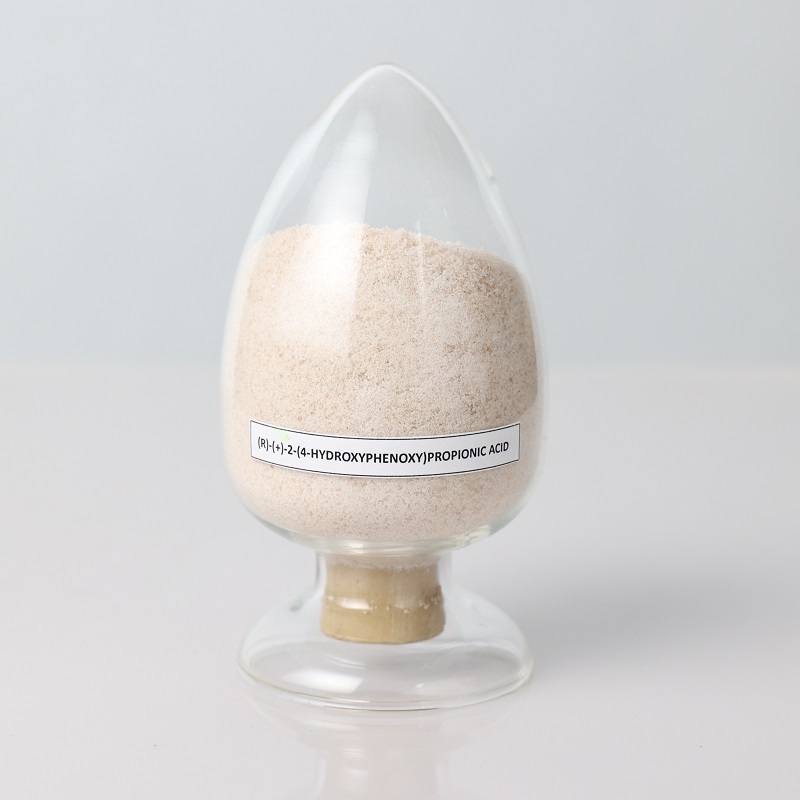(R) – (+) – 2 – (4-Hydroxyphenoxy) Propionic Acid (HPPA)
Specifications :
|
Item |
Standard |
|
Appearance |
White crystalline solid |
|
Chemical assay |
≥99.0% |
|
Optical purity |
≥99.0% |
|
Melting point |
143-147℃ |
|
Moisture |
≤0.5% |
Specific application
Pesticide intermediates; It is used as an intermediate of puma, high efficiency Gaicao, jingwensha, jingquizalofop, alkyne ester and other herbicides
Production method
1. P-chlorobenzoyl chloride was prepared by the reaction of p-chlorobenzoyl chloride with anisole, followed by drolysis and demetlation.
2. Reaction of p-chlorobenzoyl chloride with phenol: dissolve 9.4g (0.1mol) of phenol in 4ml of 10% sodium droxide solution, add 14ml (0.110mol) of p-chlorobenzoyl chloride dropwise at 40 ~ 45 ℃, add it within 30min, and react at the same temperature for 1H. Cool to room temperature, filter and dry to obtain 22.3g of phenyl p-Chlorobenzoate. The yield is 96%, and the melting point is 99 ~ 101 ℃.
Leakage emergency treatment
Protective measures, protective equipment and emergency disposal procedures for operators:
It is recommended that emergency treatment personnel wear air breathing apparatus, anti-static clothes and rubber oil resistant gloves.
Do not touch or cross spills.
All equipment used during operation shall be grounded.
Cut off the source of leakage as much as possible. Eliminate all ignition sources.
The warning area shall be designated according to the area affected by liquid flow, steam or dust diffusion, and irrelevant personnel shall be evacuated to the safety area from crosswind and upwind.
Environmental protection measures: contain leakage to avoid environmental pollution. Prevent leakage from entering sewers, surface water and groundwater.
Storage and removal methods of leaked chemicals and disposal materials used:
Small leakage: collect the leakage liquid in a sealable container as far as possible. Absorb with sand, activated carbon or other inert materials and transfer to a safe place. Do not flush into the sewer.
Massive leakage: build a dike or dig a pit for reception. Close the drainage pipe. Foam is used to cover evaporation. Transfer to tank car or special collector with explosion-proof pump, recycle or transport to waste treatment site for disposal.
Personal protective equipment:
Respiratory protection: when the concentration in the air exceeds the standard, wear filter gas mask (half mask). When rescuing or evacuating in an emergency, you should wear an air breathing apparatus.
Hand protection: wear rubber oil resistant gloves.
Eye protection: wear chemical safety protection eyes.
Skin and body protection: wear anti poison penetration work clothes.
Professional technical engineer dedicated to guide you
According to your actual needs, choose the most reasonable overall design and planning procedures
